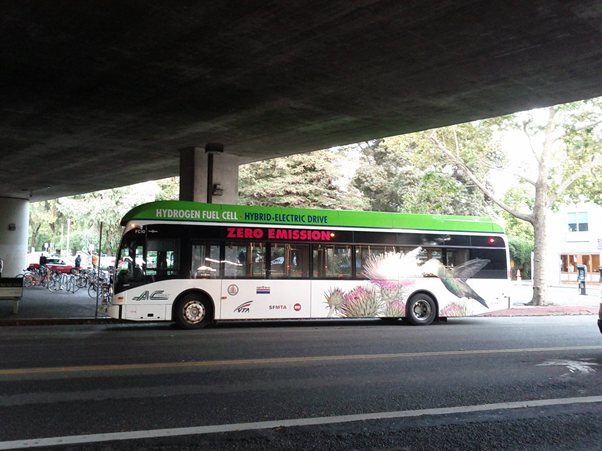우수연구성과
Chung-Ang University Researchers Develop Novel Heterostructure Catalyst for Effective Hydrogen Gener
Chung-Ang University Researchers Develop
Novel Heterostructure Catalyst for Effective Hydrogen Generation from Water
Splitting
The new catalyst improves the efficiency of hydrogen
production from water splitting without incurring high costs
Hydrogen,
a clean fuel, can be produced sustainably by electrocatalytic water splitting,
a process where the water molecule is split into oxygen and hydrogen gas using
electricity. However, the need for expensive and rare metal catalysts make the
process unfeasible for large-scale industrial use. In this study, Chung-Ang
University researchers develop an inexpensive catalyst composed of a transition
metal hydroxide-sulfide heterostructure that makes for highly efficient overall
water splitting.

Hydrogen fuel cells produce clean
electricity, generating only water as a byproduct. Developing efficient and
inexpensive catalysts with improved performance in hydrogen production from
water splitting is, therefore, imperative. Now, researchers from Chung-Ang
University make use of metal–organic frameworks and transition metal hydroxides
to this end.
Image credit: AC Transit hydrogen
fuel cell bus by Eric Fischer
License type: licensed under CC BY
2.0
Image link: https://search.openverse.engineering/image/b7685b3c-9a19-4588-b6b6-c2dfb30331be
Concerns about rising atmospheric carbon dioxide levels and global warming have
made it an environmental imperative to replace fossil fuels with cleaner and
more sustainable alternatives. In this regard, hydrogen, a clean energy source,
has emerged as an excellent potential candidate.
Among the several methods available for hydrogen generation, splitting
water using electricity in presence of a catalyst, or “electrocatalytic water
splitting,” as it is called, is the cleanest. Unfortunately, the process requires
expensive and rare noble metal catalysts, such as platinum, to maintain a
reasonable efficiency. This, in turn, has limited its large-scale industrial
applications.
A relatively inexpensive option is transition metal-based catalysts, such
as oxides, sulfides, hydroxides of cobalt, nickel, iron etc. However, there is
a catch: the electrocatalytic water splitting consists of two half-reactions,
namely the hydrogen evolution reaction (HER) and the oxygen evolution reaction
(OER). In OER, water molecules are oxidized to form oxygen and positive
hydrogen ions at the anode (positively charged electrode). The hydrogen ions
then move across the electrolyte to the cathode (the negatively charged
electrode), where they are reduced to produce hydrogen (HER). It turns out that
most transition metal-based catalysts reported so far can only catalyze either
HER or OER. This makes for a complicated configuration and a higher overall
cost.
Against this backdrop, researchers from Chung-Ang University in Korea
developed, in a new study, a novel heterostructured catalyst consisting of
hollow cobalt sulfide (CoSx) and nickel-iron (NiFe) layered double hydroxide
(LDH) nanosheets that simultaneously boosts both the half-reactions. This paper was made available online on 15 March 2022 and was published in
Volume 18 Issue 16 of the journal Small on 16 April 2022.
“A reasonable strategy for fabricating
highly efficient catalysts for water splitting is to elaborately integrate OER-active
NiFe LDH and HER-active catalysts into a heterostructure,” explains Assistant Professor Seung-Keun Park, who headed the study. “Given their high surface area and open
structure, hollow HER catalysts are believed to be ideal for this job. It turns
out that metal – organic frameworks (MOFs) are an efficient precursor for fabricating
hollow structures. However, an MOF-based hollow catalyst with NiFe LDH has not
be reported so far.”
Accordingly, the researchers electrochemically deposited NiFe LDH
nanosheets in a controlled manner on the surface of hollow CoSx
nanoarrays supported on nickel foam. “The integration of an active HER catalyst,
CoSx and an OER catalyst, NiFe LDH, guarantees a
superior bifunctional catalytic activity,” says Dr. Park.
And indeed, the catalyst was able to consistently deliver a high current
density of 1000 mA cm-2 in both half-reactions at low cell voltages,
suggesting its feasibility for industrial scale water-splitting applications.
The researchers attributed this to the presence of ample active sites on the
catalyst heterostructure, which enabled electrolyte penetration and gas release
during the reactions. Additionally, an electrolyzer based on this catalyst demonstrated
a high current density of 300 mA cm-2 at a low cell voltage and a
durability of 100 hours in overall water splitting.
“The enhanced electrocatalytic properties
of our catalyst is likely due to its unique hierarchical heterostructure and the
synergy between its components. We believe that our work will take us one step
closer towards realizing a zero emission society,” says an optimistic Dr. Park.
And we hope we are not far!
Reference
|
Authors |
Yun Jae Lee and Seung-Keun Park |
|
Title of original paper
|
Metal–Organic Framework-Derived Hollow CoSx Nanoarray
Coupled with NiFe Layered Double Hydroxides as
Efficient Bifunctional Electrocatalyst for Overall Water
Splitting |
|
Journal |
Small |
|
DOI |
|
|
Affiliations |
Chung-Ang University, Republic of Korea |
About Chung-Ang University
Chung-Ang University is a private comprehensive research university
located in Seoul, South Korea. It was started as a kindergarten in 1918 and
attained university status in 1953. It is fully accredited by the Ministry of
Education of Korea. Chung-Ang University conducts research activities under the
slogan of “Justice and Truth.” Its new vision for completing 100 years is “The
Global Creative Leader.” Chung-Ang University offers undergraduate,
postgraduate, and doctoral programs, which encompass a law school, management
program, and medical school; it has 16 undergraduate and graduate schools each.
Chung-Ang University’s culture and arts programs are considered the best in
Korea.
Website: https://neweng.cau.ac.kr/index.do
About Assistant Professor Seung-Keun Park
Seung-Keun Park is currently an Assistant Professor at the Department of
Advanced Materials Engineering at Chung-Ang University, Korea. He received his
Ph.D. (2016) in Convergence Science from Seoul National University and
completed his postdoctoral training at Korea University. His research group is
developing novel approaches to precise designing of nanostructured materials
for energy storage and conversion applications. Dr. Park has published over 80
papers in reputed, peer-reviewed journals. Currently, he has a total ISI
citation of over 3900 and an h-index of 35 (Google Scholar).
